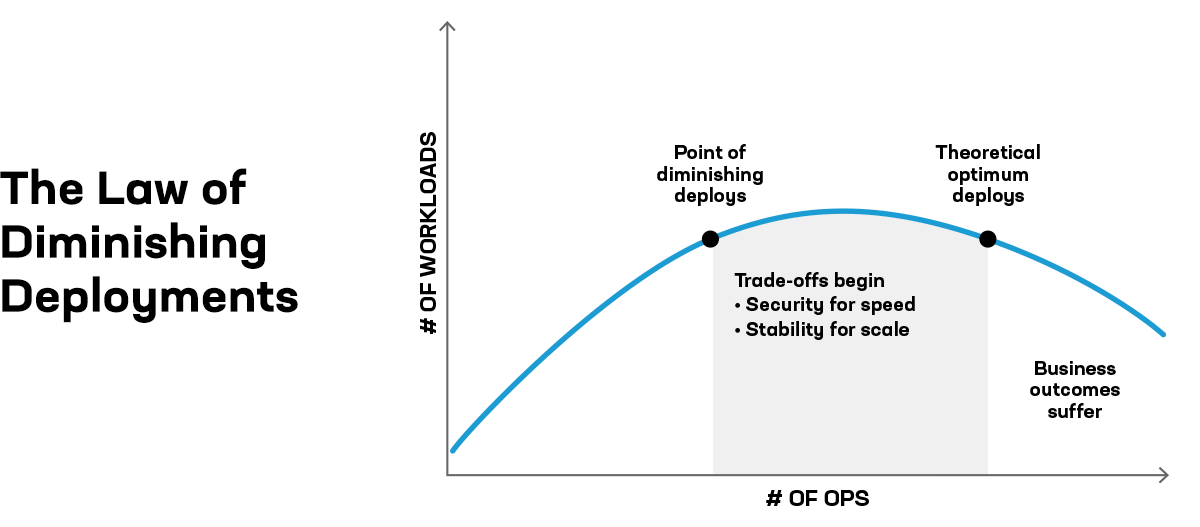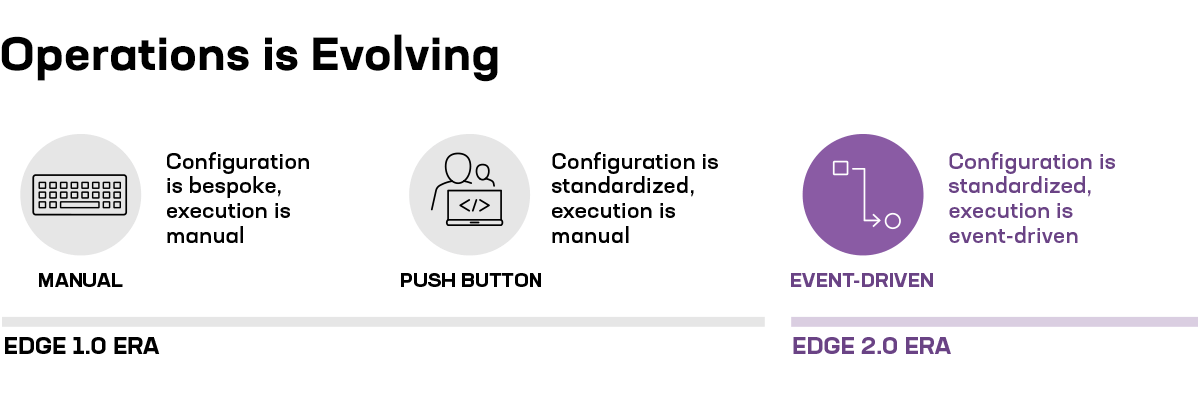Applications adaptatives et infrastructure pilotée par événements en tant que code
La transformation numérique est un parcours commercial accompagné d’une évolution technologique. Au cours de ce voyage, l’activité numérique est rendue possible par un passage opérationnel des méthodes manuelles à l’exécution automatisée.
Si les technologies liées à la sécurité sont peut-être à l’avant-garde de cette automatisation en raison de l’évolution constante des attaquants, les opérations ne sont en réalité pas si loin derrière. Considérez, par exemple, notre recours à la mise à l’échelle automatique pour étendre nos capacités numériques à la demande. Il y a eu un moment un débat controversé sur la question de savoir si les systèmes externes devaient gérer la capacité des actifs numériques.
Sérieusement.
Aujourd'hui, ce n'est même plus une question. Nous acceptons non seulement, mais attendons des capacités de mise à l’échelle automatique dans le cadre de notre pile d’infrastructure.
Il est donc tout à fait logique de penser qu’une automatisation accrue deviendra un prérequis incontournable. À un moment donné, gérer manuellement les ressources qui assurent et protègent les expériences numériques produira des rendements décroissants et exigera de vous appuyer davantage sur la technologie.

Nous savons qu’une approche d’ infrastructure en tant que code (IaC) présente une valeur. Nos recherches ont montré des avantages significatifs en termes de fréquence de déploiement en fonction de l'adoption de l'IaC. Plus de la moitié (52 %) des organisations traitent l'infrastructure comme du code, et celles qui le font sont plus de deux fois plus susceptibles de déployer plus fréquemment. Plus précieux encore, ils sont quatre fois plus susceptibles de disposer de pipelines de déploiement d’applications entièrement automatisés.
Il s’agit d’une relation importante à noter, car elle devient une capacité essentielle pour les organisations qui souhaitent profiter des avantages commerciaux des applications adaptatives .
Infrastructure pilotée par événements en tant que code
La différence entre l’infrastructure en tant que code et l’infrastructure en tant que code pilotée par les événements réside essentiellement dans ce qui déclenche un déploiement.
La plupart des organisations passent des méthodes manuelles à l’automatisation avec une infrastructure en tant que code, tout en conservant le contrôle des déploiements. Autrement dit, un opérateur est toujours nécessaire pour déclencher un déploiement. Il s’agit d’un déploiement par simple pression sur un bouton.
Avec une approche pilotée par événement, le déclencheur est automatisé en fonction d’un événement. Considérez à nouveau la mise à l’échelle automatique comme un exemple. Le déploiement réel des modifications de configuration et des charges de travail supplémentaires est déclenché par un événement, souvent lorsque le nombre de connexions simultanées a dépassé un seuil prédéterminé. Cet événement (dépassant une limite définie) déclenche un flux de travail automatisé.
Imaginez maintenant, si vous le voulez bien, que ce processus soit étendu pour inclure une application entière. Cela signifie toutes les charges de travail et les services technologiques associés qui les fournissent et les sécurisent. L'événement est désormais une performance en deçà de ce qui définit une expérience numérique acceptable. Cet événement signifie qu'il est nécessaire de déployer automatiquement une « application » à l'autre bout du monde et déclenche un flux de travail automatisé qui le fait, dans un endroit complètement distant.

Ce n’est pas de la science-fiction (informatique). Ce type de déploiement automatisé d’une application entière (ses charges de travail, son infrastructure et ses services de support) est souvent déployé sur un cloud public via des outils d’orchestration comme Terraform. Les artefacts de configuration sont extraits d'un référentiel, les conteneurs d'une bibliothèque, les secrets (certificats et clés) d'un coffre-fort sécurisé. Automatiquement. C’est l’essence même de l’infrastructure en tant que code : les configurations, les politiques et les secrets sont traités comme des artefacts de code pour permettre l’automatisation du pipeline de déploiement.
Ce qui n’est pas automatisé aujourd’hui, c’est le déclencheur. L'événement est désormais « l'opérateur a appuyé sur le bouton/a tapé la commande ». L'événement dans le futur deviendra l'heure de la journée, la demande dans un lieu particulier, la performance pour une région géographique.
Cela représente un élément clé pour rendre les applications adaptatives à l’avenir : la capacité à réagir automatiquement aux événements et à ajuster l’emplacement, la sécurité et la capacité afin d’atteindre les niveaux de service attendus. Edge 2.0, avec son plan de contrôle unifié, offrira aux entreprises la possibilité d’exploiter des ressources à travers plusieurs clouds, l’edge et le centre de données pour atteindre cet objectif.
L’infrastructure pilotée par événements en tant que code sera une capacité essentielle pour apporter les avantages des applications adaptatives à l’entreprise.
